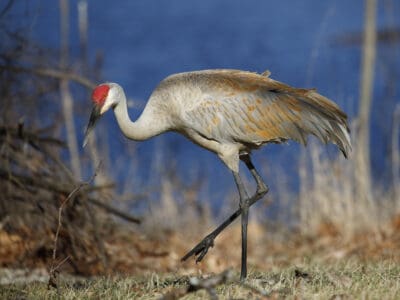Connecticut is the third smallest state in the US, but that doesn’t mean it’s lacking in biodiversity. While roughly 60% of Connecticut is covered by forest, the rest is claimed by coasts and wetlands. Dozens of mammals, reptilians, and amphibians call the state home along with hundreds of species of birds. 60% of Connecticut’s 3.4 million acres are covered by trees. ©Enfi/Shutterstock.com
Notable wildlife of Connecticut includes the badger, beaver, long-tailed weasel, and white-tail deer — but that’s just scratching the surface of the animal diversity in the state. The coasts and marshes play home to a huge marine population.
The Official Animal of Connecticut
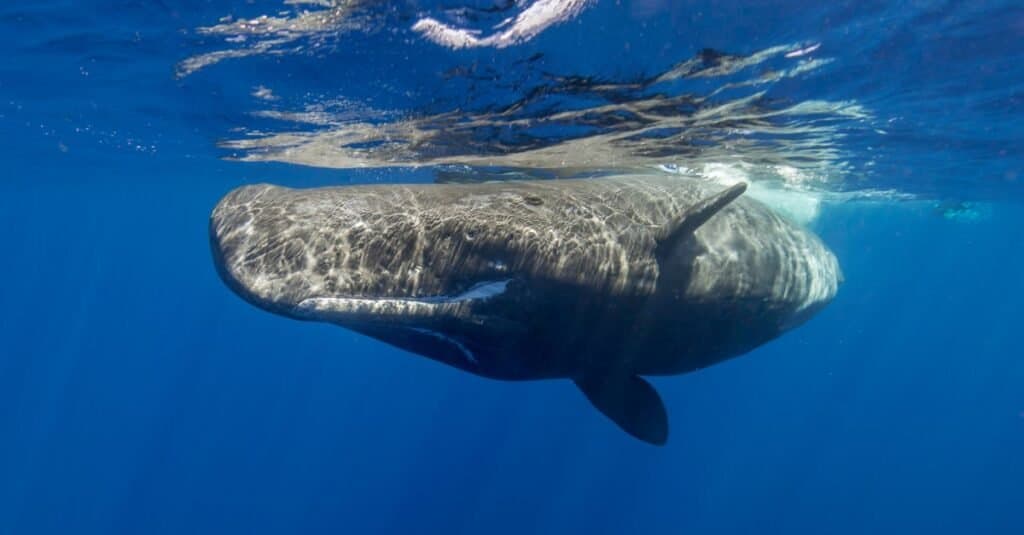
The sperm whale was chosen as the official state animal of Connecticut for its role in the state’s history and to raise awareness of its endangered status.
©wildestanimal/Shutterstock.com
Connecticut didn’t settle on an official state animal until 1975. The sperm whale was chosen because it played a part in the state’s history but also to raise awareness for its position as one of the rarest species on the endangered wildlife list. Connecticut was once an epicenter for the whaling industry, but the modern embrace of the sperm whale demonstrates a shift toward conservation.
Connecticut also has a state bird in the form of the American robin. Designated by the general assembly in 1943, the robin was chosen thanks to the ubiquitous presence of their songs and chirps throughout the state.
Where To Find The Top Wild Animals in Connecticut
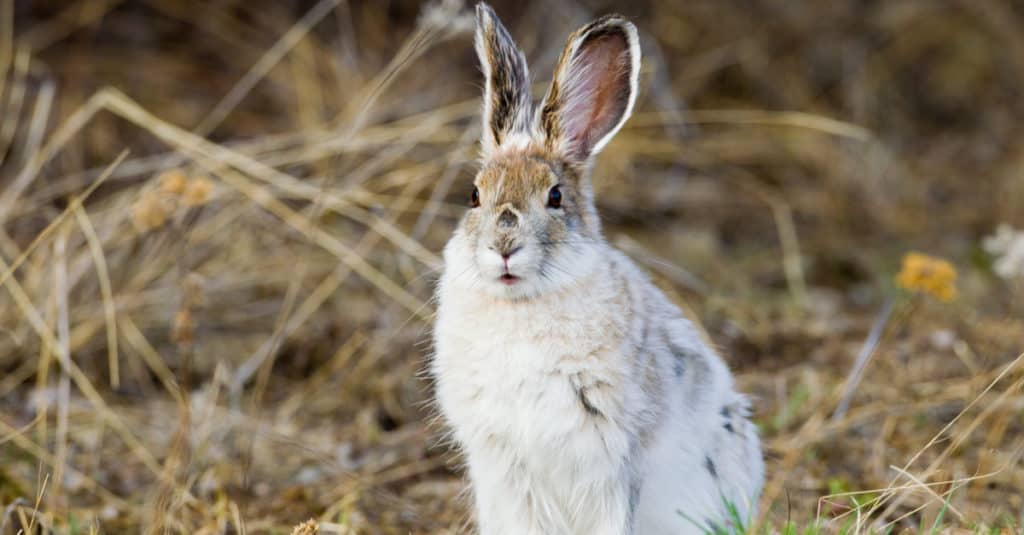
Snowshoe hares are native to the state of Connecticut.
©Jukka Jantunen/Shutterstock.com
The landmass of Connecticut may be small, but it packs in a lot of biodiversities. Coast to the east gives way to a variety of different marshlands, waterfalls, and finally dry forests and mountains.
Connecticut’s woodland ecosystem is similar to much of North America. Predators like black bears, coyotes, and red foxes hunt in search of prey like white-tail deer and snowshoe hares. The long-tailed weasel and badger also have a home here along with a number of different rodents.
The marshlands of Connecticut are unique in that they’re home to both tidal wetlands and salt marshes. While both have their own flora and fauna, woodchucks and beavers both play prominent roles in these regions along with river otters, turtles, and a number of different frogs and snakes.
The largest animal you’ll find in the waters surrounding Connecticut is the imposing sperm whale, but they aren’t the only marine life worth seeing. Gray and harbor seals can both be found along with porpoises on Connecticut’s beaches. Native plants and animals can be seen at Connecticut’s White Memorial Conservation Center.
©iStock.com/Holcy
Highly recommended spots for wildlife sightings include:
- Meigs Point Nature Center
- Stewart B. McKinney National Wildlife Refuge
- Dennis Farm Preserve
- White Memorial Conservation Center
- Denison Pequotsepos Nature Center
The Most Dangerous Animals In Connecticut Today

Black bears weigh up to 500 pounds and are considered to be one of the most dangerous animals in Connecticut.
©Ghost Bear/Shutterstock.com
It’s very unlikely that you’ll be seriously endangered walking through nature in Connecticut, but that’s not to say there aren’t some fierce predators out in the wild. The most dangerous mammal is easily the black bear. These massive bears can weigh up to 500 pounds and run up to 35 miles per hour, but it’s estimated that there are only roughly 300 of these bears in the state. Coyotes are a relatively recent addition to the ecosystem, but they can sometimes be found in the city. Bobcats are even rarer.
But the most dangerous animals are actually reptiles rather than mammals. Copperheads and timber rattlesnakes are both highly poisonous, but they both maintain very small populations in the state. The timber rattlesnake is actually endangered and mostly confined to preserves.
Largest Animal in Connecticut

The sperm whale is the largest animal in Connecticut.
©wildestanimal/Shutterstock.com
The sperm whale has a long history with Connecticut – which wasn’t always a good thing for the animal made famous in Herman Melville’s “Moby Dick”. During the 1800s Connecticut ranked second only to Massachusetts in the American whaling industry. The sperm whale was the species most sought after by whalers for its oil used for lamps and other products. The great whale is now on the endangered species list.
At over 60 feet in length and weighing up to 53 tons, the sperm whale is the largest of the toothed whales and the largest animal in Connecticut waters. The sperm whale’s brain is the largest of any creature on earth – housed in a head that takes up a third of its body. These giants of the ocean live in deep water and can dive up to 10,000 feet deep. Sperm whales feed on squid, fish, octopus, sharks, and more to consume as much as 2,700 pounds of food per day.
Rarest Animal in Connecticut

The piping plover is one of the rarest animals in Connecticut.
©iStock.com/BrianEKushner
The tiny piping plover is a shorebird that is native to Connecticut and is listed as a federally endangered species in the state. Measuring only 7 inches in length, this stocky little bird nests and breeds on sandy beaches along the Atlantic coast. Adult piping plovers have a short, orange bill with a black tip, a black crown stripe, and black neckband. The bird was named for its melodic, plaintive whistle.
The piping plover controls insect and small crustacean populations on beaches – making it an important part of the beach environment. The little shorebirds are often prey to bigger gulls, rats, foxes, raccoons, and domestic cats. Many of its nesting habitats have been lost to coastal development and human recreation on beaches – especially the use of off-road vehicles.
Endangered Animals In Connecticut

Barn owls are endangered in Connecticut but are on their way to recovery.
©iStock.com/mzphoto11
The most prominent endangered animals in Connecticut include:
- Least shrew – Small mammals commonly mistaken for rodents
- Sperm whale – The state animal of Connecticut, almost driven to extinction by whaling
- Barn owl – The most widely recognized breed of owl, on its way back to recovery as a species
- Leatherback sea turtle – A highly migratory species largely endangered by the fishing industry
- Bald eagle – America’s national bird, currently increasing in population after being brought to the brink
Zoos in Connecticut
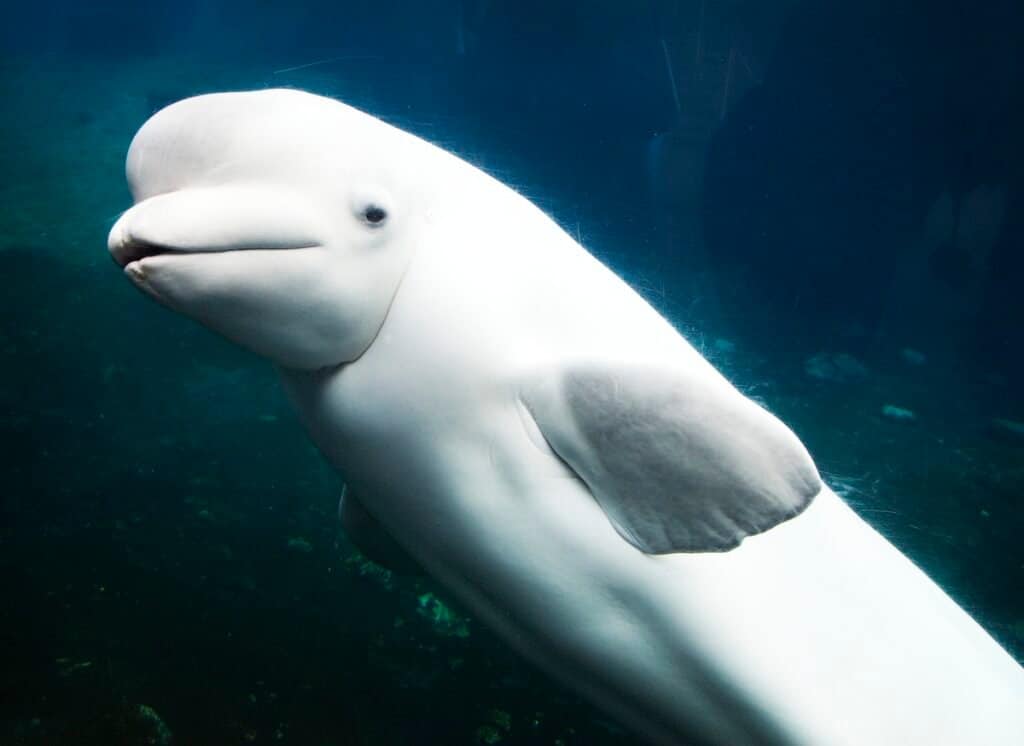
Mystic Aquarium has a renowned outdoor beluga whale display.
©Carol M Highsmith / CC0 1.0, Rawpixel – License
Connecticut’s zoos include:
- Beardsley Zoo: Located in Bridgeport, Connecticut, Beardsley Zoo is divided into nine major exhibits including the Rainforest Building, a Predators enclosure featuring Amur leopards and tigers and a rare Andean bear, an Alligator Alley trail featuring animals of the southeastern U.S., a Hoofstock trail with animals of the great plains including bison, a New England Farmyard, a wolf exhibit, a native reptile house and an education center called Professor Beardsley’s Research Station.
- Mystic Aquarium: Located in Mystic, Connecticut, the Mystic Aquarium is one of only two U.S. facilities featuring Steller sea lions and is known for its popular outdoor Beluga whale display. Special exhibits include a ray and shark touch pool, an African penguin exhibit, a jelly gallery, and the “Jurassic Giants” dinosaur exhibit.
Wild Animals in Connecticut

American badgers are native to Connecticut.
©Warren Metcalf/Shutterstock.com
Over 60% of Connecticut is forested, making it the 14th most forested state in the country. And while the native wildlife might not be strange to the average American, the diversity at play here is. And the preservation efforts covered in the state’s Wildlife Action Plan are designed to protect everything from fish to rodents and ensure that wild animals continue to have a place within Connecticut’s ecosystems.
Predators like black bears are common, but you’ll also find more regional native species like the long-tailed weasel and badger to be a common sight. The strange star-nosed mole is also native to the state, but the fact that it only lives in the wetlands means that it’s one of the rarest mammals to see.
Snakes in Connecticut

Eastern copperheads are one of two venomous snakes in Connecticut.
©Jeff W. Jarrett/Shutterstock.com
There are 14 species of snakes in Connecticut. Most are relatively small and avoid humans, however, there are two venomous states that will live within the state’s borders. Both the timber rattlesnake and copperhead are venomous, and you should be aware of what both look like while enjoying the outdoors in Connecticut!
Other common snakes in the state include the smooth green snake, the common garter snake, and the redbelly snake. If you’re near water and see a snake it’s likely the northern water snake. These water snakes live in many of Connecticut’s waterways.
Official Connecticut State Insect

The European mantis is the official state insect of Connecticut.
©Tatyana-Sanina/Shutterstock.com
The official Connecticut state insect is the European mantis. This strange-looking insect was first brought from Europe to North America to fight plant pests insects. Today, from the beginning of May or June until the arrival of winter weather, the European mantis can be spotted all over Connecticut.
This large insect is an accomplished hunter that eats moths, mosquitoes, roaches, flies, aphids, lizards, and small rodents. They are fierce predators who chase their prey after terrifying them by spreading their wings in a frightening display of power.
More Articles Related to Connecticut
Read about:
- extinct animals that lived in Connecticut.
- the longest biking trail in Connecticut.
- the largest bear ever caught in Connecticut.
- the common ticks in Connecticut.
- the types of hawks in Connecticut.
- the best fish to catch in Connecticut in the summer.
Connecticuter Animals

Admiral Butterfly
Stunningly beautiful wings
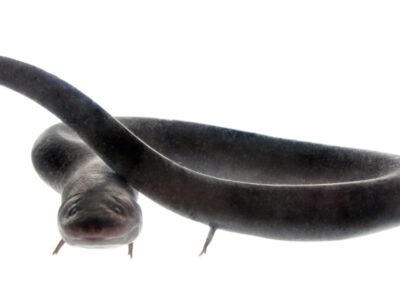
American Eel
Don't eat raw eel! Their blood is poisonous to humans when consumed raw.

Armyworm
They are so named because they "march" in armies of worms from one crop to another in search of food
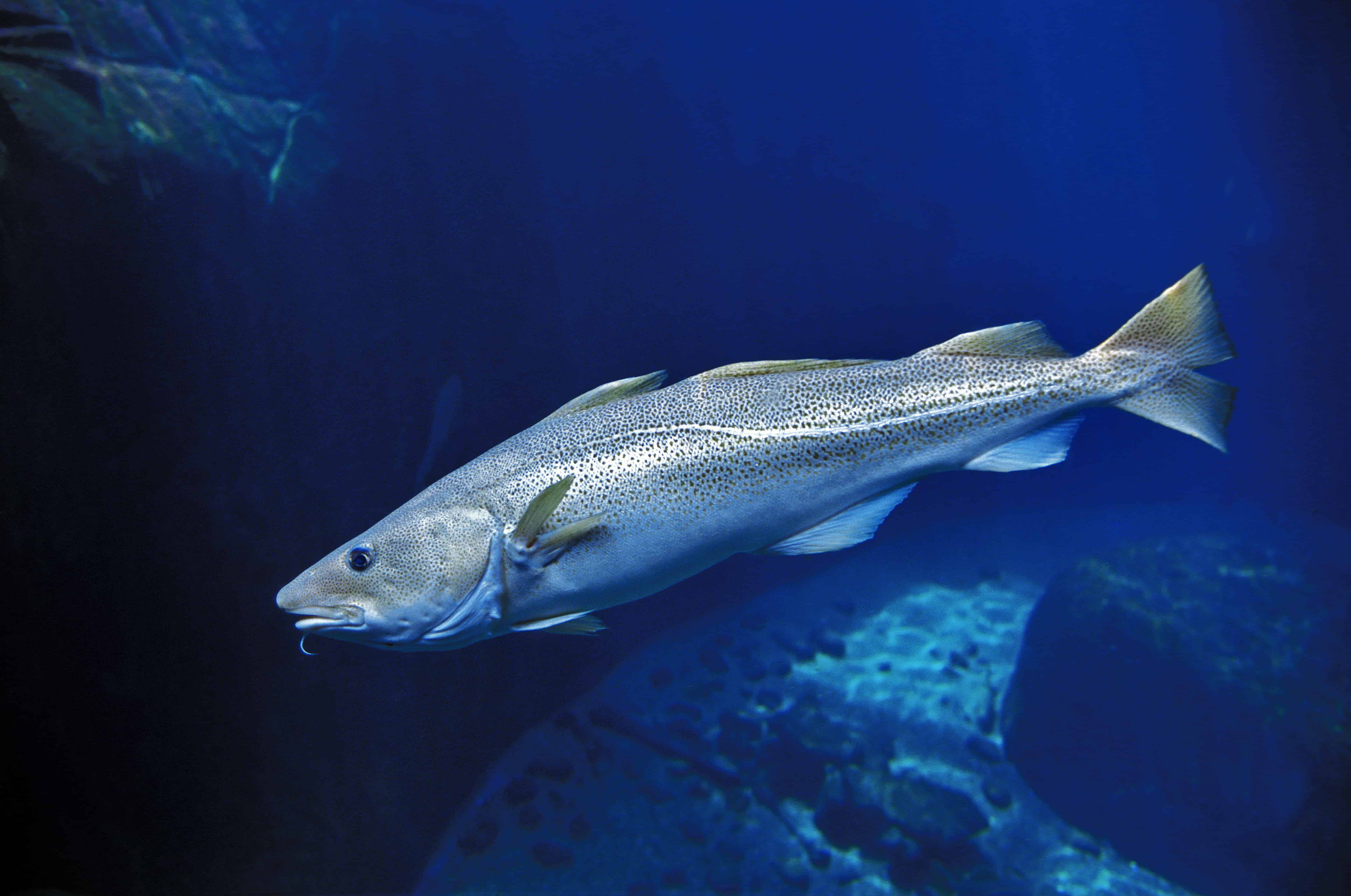
Atlantic Cod
One of the most popular food fishes in the world
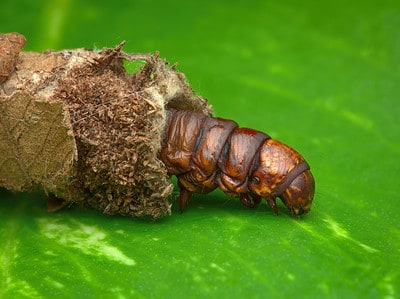
Bagworm Moth Caterpillar
They continually enlarge their protective cases

Beewolf wasp
They hunt bees
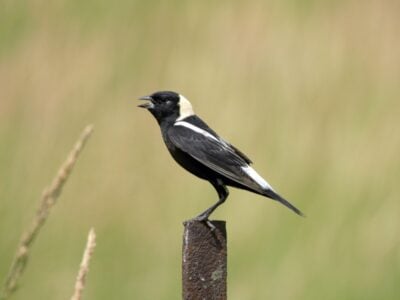
Bobolink
In spring, the male bobolink is the only North American bird who is dark below and light colored above. This makes identification easy.

Clearnose Skate
The skate with translucent nose patches

Common Yellowthroat
The Common Yellowthroat stays close to the ground and uses stealth to survive!
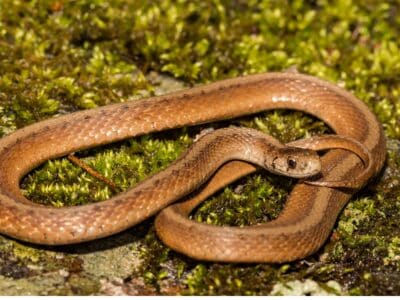
De Kay’s Brown Snake
They have specialized jaws for removing snails from shells.

Eastern Chipmunk
The name chipmunk is derived from an Ojibwe word that means “one who descends the trees headfirst.”

Flea
Adult fleas can jump up to 7 inches in the air
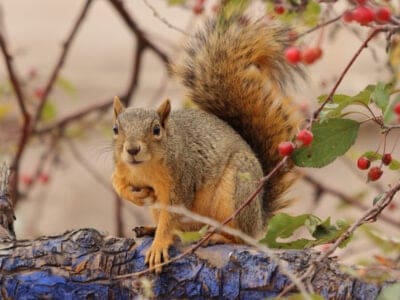
Fox Squirrel
Although it is a tree squirrel, it spends most of its time on the ground.

Groundhog (Woodchuck)
They whistle to each other to warn of approaching danger!

Jack Crevalle
One of the biggest species in the Caranx genus

Mealybug
They have a symbiotic relationship with ants.

Mockingbird
Mockingbirds are incredible mimics that can learn hundreds of songs!
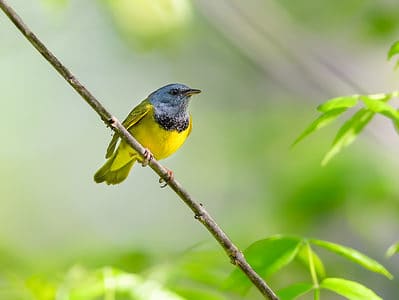
Mourning Warbler
The Mourning Warbler was named for its gray head, which resembles a mourning veil!

Nematode
Nematodes range in size from 1/10 of an inch to 28 feet long

Northern Water Snake
Northern watersnakes’ teeth help them nab fish as they swim by.

Orb Weaver
Females are about four times the size of males

Owl
The owl can rotate its head some 270 degrees
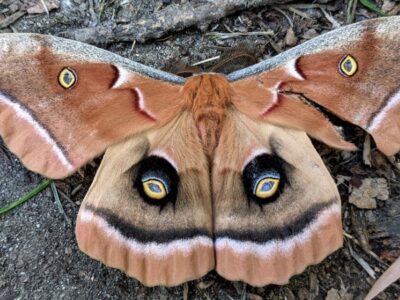
Polyphemus Moth
The Polyphemus moth doesn’t and can't eat, except when it's a caterpillar!

Pompano Fish
They are bottom-feeders
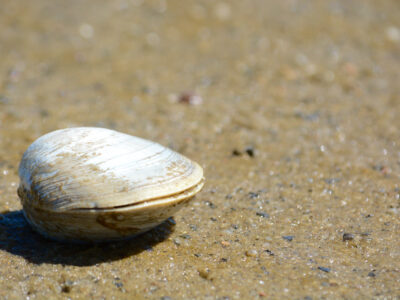
Quahog Clam
Their hinged shell protects their soft body
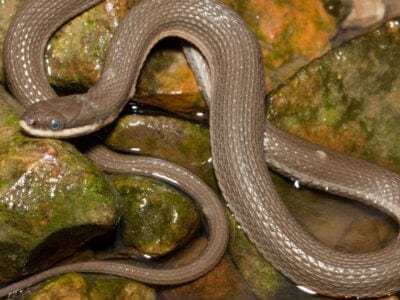
Queen Snake
Queen snakes have armor-like scales on the top of their head

Rat Snakes
Rat snakes are constrictors from the Colubridae family of snakes.
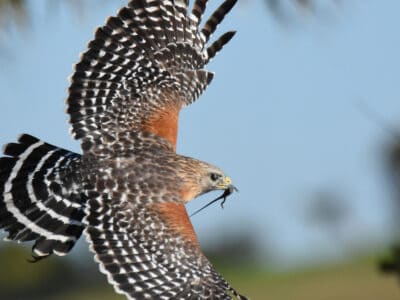
Red-Shouldered Hawk
Red-Shouldered Hawks reuse the same nesting area each year.

Rooster
Will mate with the entire flock!
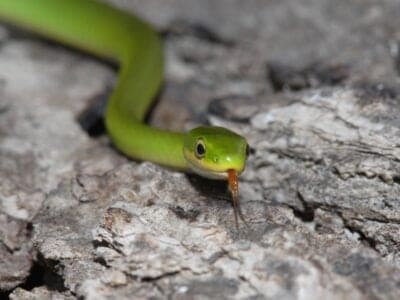
Rough Green Snake
Rough green snakes are great pet snakes because they're low-maintenance.
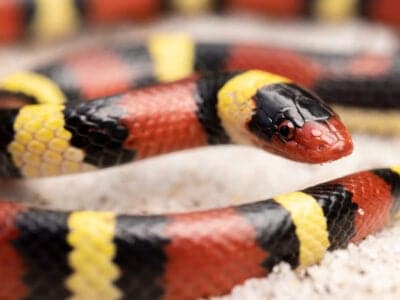
Scarlet Kingsnake
Scarlet kingsnake’s pattern is an example of Batesian mimicry.
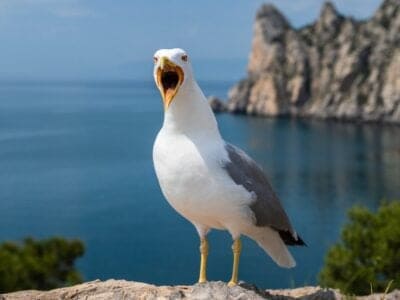
Seagull
Some gulls are capable of using tools

Smallmouth Bass
A fierce fighter!

Smokybrown Cockroach
Has up to 45 eggs per egg case
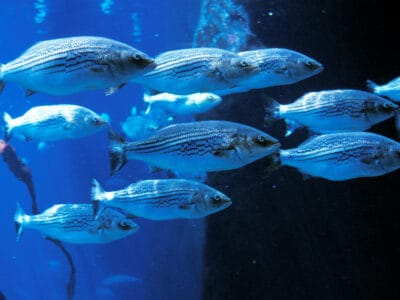
Striped Bass
Pilgrims counted striped bass as an essential part of their diet from the time they arrived in North America.

Tiger Trout
As tiger trout are sterile, they cannot produce offspring. However, they do have relatively long lifespans and can live up to 10 years in captivity.

Tree Cricket
They make music with their wings
Connecticuter Animals List
- Admiral Butterfly
- American Eel
- Armyworm
- Atlantic Cod
- Bagworm Moth Caterpillar
- Beewolf wasp
- Bobolink
- Clearnose Skate
- Common Yellowthroat
- De Kay’s Brown Snake
- Eastern Chipmunk
- Flea
- Fox Squirrel
- Groundhog (Woodchuck)
- Jack Crevalle
- Mealybug
- Milk Snake
- Mockingbird
- Mourning Warbler
- Nematode
- Northern Water Snake
- Orb Weaver
- Owl
- Polyphemus Moth
- Pompano Fish
- Quahog Clam
- Queen Snake
- Rat Snakes
- Red-Shouldered Hawk
- Rooster
- Rough Green Snake
- Sandhill Crane
- Scarlet Kingsnake
- Seagull
- Smallmouth Bass
- Smokybrown Cockroach
- Striped Bass
- Swallowtail Butterfly
- Tiger Trout
- Tree Cricket
- Yellowish Cuckoo Bumblebee (formerly Fernald’s Cuckoo Bumblebee)
Animals in Connecticut FAQs (Frequently Asked Questions)
What are the most common animals in Connecticut?
The Eastern gray squirrel is the mammal most commonly seen in the state, but rodents like groundhogs are also common. Beavers are typical sights in the wetlands, while white-tail deer can be seen frequently in the forested areas. The apex predators through much of Connecticut’s natural world are usually black bears.
How many animals live in Connecticut
There are 84 mammal species and 49 reptile and amphibian species in Connecticut, but the most diversity comes from the skies. There are 335 documented bird species in the state. It’s also home to 75 species of freshwater fish, with 50 of these fish being native to Connecticut.
Are wolves in Connecticut?
There are no wolves in Connecticut, but Connecticut is home to a close family member of the wolf thanks to its population of coyotes.
Are there moose in Connecticut?
While moose can be found in Connecticut, it’s considered a strange sight in much of the state. Moose are typically found in the northern forests and wetlands, but they’re one of the rarest herbivores you’ll find in the state.
What are some of the best lakes in Connecticut?
The Connecticut River creates a fascinating lake system that starts with a series of lakes known as First, Second, Third, and Fourth Connecticut Lake. These lakes are actually in New Hampshire at the source of the river. Within the state itself, excellent lake options include Candlewood Lake if you’re looking for options near New York City and Bantam Lake as a natural lake option.





